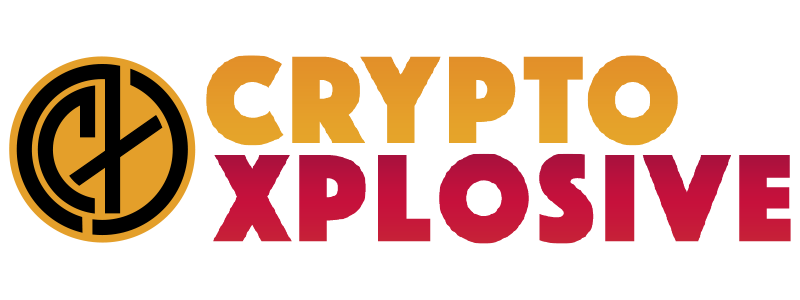Akash Network’s Greg Osuri (Interview)

In a candid conversation during EthCC, Greg Osuri, the founder of Akash Network, shares insights into his journey, Akash’s inception, and the future of decentralized cloud computing.
Osuri’s venture into the world of decentralized cloud computing began long before Akash Network.
Osuri, an experienced entrepreneur, first made waves with AngelHack, the largest hackathon-based accelerator globally.
“Before AngelHack, hackathons were a very underground concept, and we made them more mainstream,” he reflects.
Through AngelHack, he helped launch numerous companies, including Firebase, which was later acquired by Google.
In 2013, Osuri encountered a significant challenge in the tech ecosystem: scaling deployments from small hackathon projects to robust, scalable solutions.
“At a hackathon, you build something in a couple of days and deploy it on Heroku, but scaling it down to Amazon is an incredible challenge that sets back companies by ages,” he explains. This led him to explore container technologies, eventually falling in love with Kubernetes, contributing extensively to its ecosystem, and developing libraries widely used today.
Akash Network: The Non-Crypto Birth
Akash Network’s story began with the vision of an open-source, decentralized cloud.
“The cloud was getting increasingly closed, introducing closed databases and ecosystems that lock you into a single platform, which means high costs and limited flexibility,” Osuri explains.
This realization drove him to democratize cloud computing, leading to the creation of Overclock Labs (the foundation behind Akash) in 2015.
Initially, Akash’s journey wasn’t directly tied to cryptocurrency. However, the team faced scalability challenges with centralized structures, prompting a pivot towards peer-to-peer infrastructure. “We discovered that the challenge of peer-to-peer is bootstrapping credentials,” Osuri recalls.
In 2016, they found Ethereum promising but faced issues with its scalability during high-demand periods like the CryptoKitties crash. This led Akash to develop its own Layer-1 blockchain using Cosmos SDK. “We chose proof of stake over proof of work, and that’s how we ended up with a token,” Osuri recounts.
Impossible to Get a GPU Right Now
Despite being a Layer-1 blockchain, Osuri clarifies that Akash is fundamentally different.
“Akash is not your typical Layer-1; it’s an app chain,” he asserts. Unlike traditional Layer-1s that offer smart contracts and shared platforms, Akash focuses on decentralized cloud computing without smart contracts. “We don’t have smart contracts. We don’t have any of the typical Layer-1s. We’re not a shared platform,” he says.
One of the primary features of Akash is its ability to provide on-demand, high-density GPUs at a fraction of the cost. Osuri emphasizes,
“It takes two years to get a GPU from Nvidia directly. If you’re an AI engineer, it’s impossible to get a GPU right now in the market.”
Akash addresses this gap by offering GPUs on demand, with a user-friendly interface allowing deployment within 90 seconds. “We’re talking about 80 cents for an A100, $2.50 for an H100,” he notes.
AI and Crypto: a Unique Synergy
As AI becomes increasingly central to modern life, Osuri sees a symbiotic relationship between AI and crypto.
“AI is going to be the center of our lives, like it or not. The traditional structures of Amazon and Google have failed AI,” he asserts.
According to Osuri, Akash leverages the surplus GPUs in the market, opening a secondary market that traditional providers can’t match. “When Apple turns on the GPT integration, where are we going with this?” he questions.
Osuri is optimistic about the future, noting that “Decentralized compute networks will only grow bigger and bigger.”
The diverse and distributed nature of AI training chips and the verification capabilities of crypto create a unique synergy, making Akash a pivotal player in this evolving landscape. “The need for AI is so great and the supply chain is not improving,” he says, predicting a significant role for decentralized solutions.
The Challenges in Onboarding Non-crypto Users
Despite its technological advancements, Akash faces challenges in onboarding non-crypto users. The requirement for a wallet and AKT tokens can be a hurdle. “Installing a wallet involves backing up your keys, and then going to Coinbase for KYC and it takes time,” Osuri explains.
To streamline this process, Akash is exploring account abstraction and trial wallets to reduce the onboarding time to just 60 seconds.
“We think it’s going to come down to 60 seconds to Akash,” he says.
Akash’s user base is increasingly non-crypto, with platforms like Brev.dev and universities like the University of Texas leveraging its capabilities. Notable users include Erik Voorhees’s Venice.ai, which utilizes Akash for its privacy-optimized chatbot. “Venice is censorship-resistant and privacy-optimized, offering features that traditional platforms can’t,” Osuri highlights.
Looking at Akash’s short—and long-term future goals, Osuri’s vision extends beyond the current landscape with a focus on scalability and accessibility. As AI and crypto continue to converge, Akash is poised to play a crucial role in this transformative journey, providing decentralized cloud solutions that are both innovative and essential for the future. “We are starting a trend; it’s very early and very exciting,” Osuri concludes.
Binance Free $600 (CryptoPotato Exclusive): Use this link to register a new account and receive $600 exclusive welcome offer on Binance (full details).
LIMITED OFFER 2024 at BYDFi Exchange: Up to $2,888 welcome reward, use this link to register and open a 100 USDT-M position for free!




Comments are closed, but trackbacks and pingbacks are open.